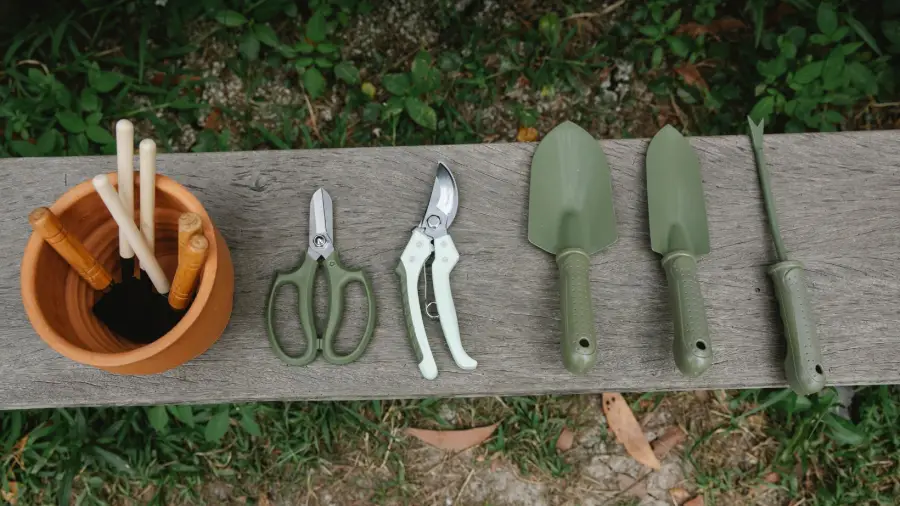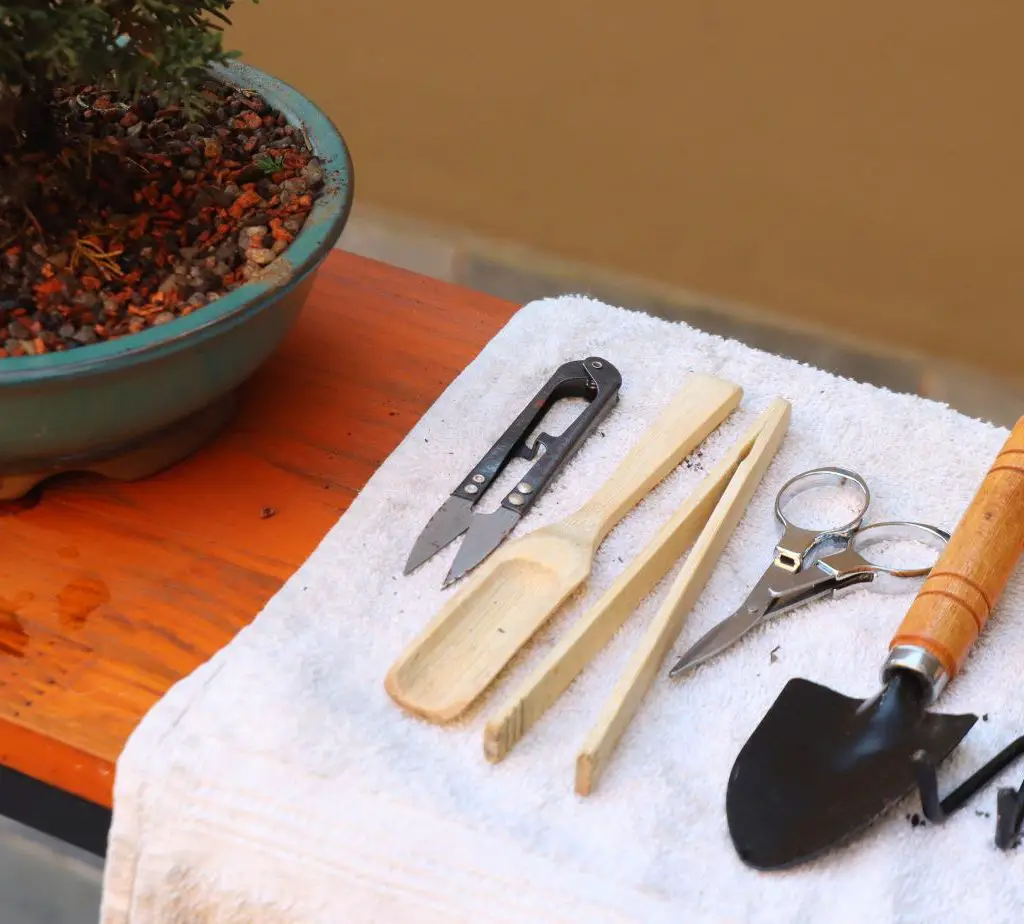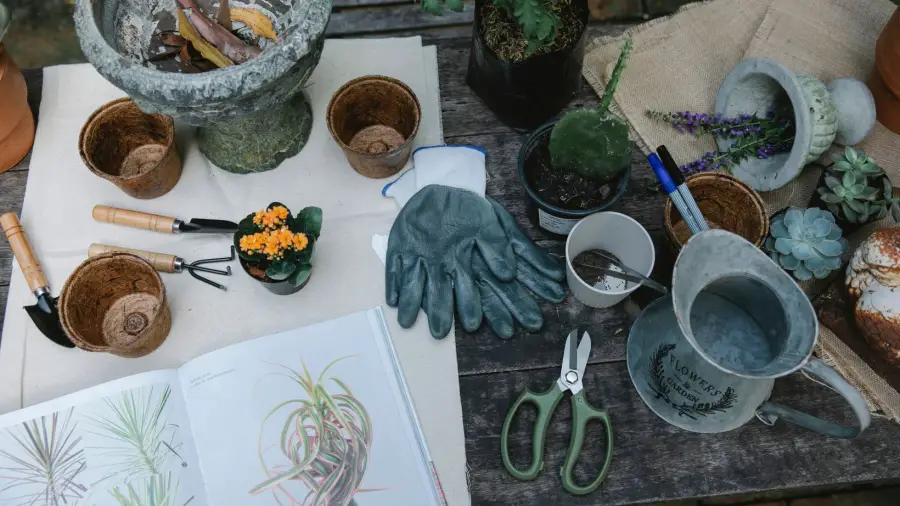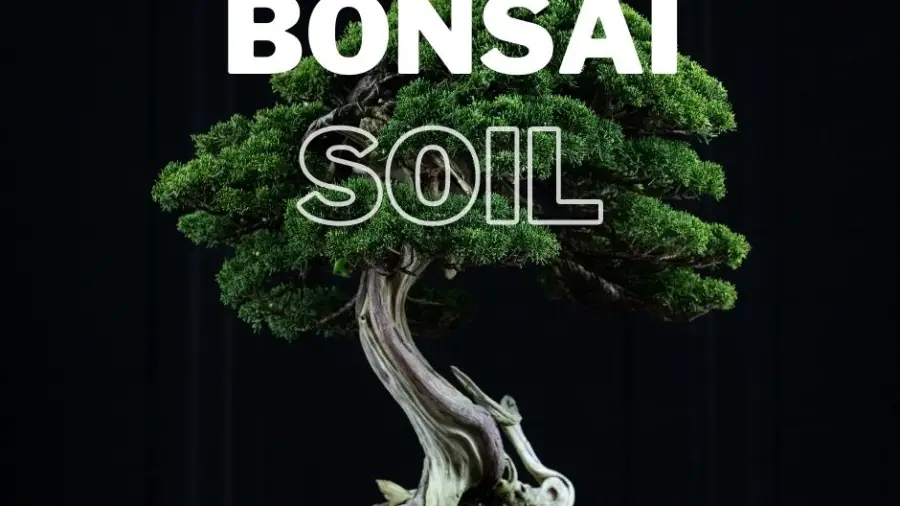Every gardener should own a garden spade and/or fork for turning the soil, aerating, and mixing nutrients, along with long-handle hoes for weeding and medium-length tools for various gardening tasks. These tools are essential for successful gardening and can greatly improve productivity and efficiency.
By having these tools on hand, gardeners can ensure that their soil is properly prepared, weeds are effectively removed, and plants receive the necessary care. Whether you are a beginner gardener or an experienced one, having the right tools is crucial for maintaining a thriving garden.

Table of Contents
From preparing the soil to pruning and harvesting, the right tools can make all the difference in achieving your gardening goals. So, let’s explore the essential tools every gardener should own in order to optimize their gardening experience.
Spades And Forks: Turning The Soil And Mixing Nutrients
Gardening is a labor of love, and having the right tools can make all the difference. When it comes to turning the soil and mixing nutrients, spades and forks are essential tools that every gardener should own. In this article, we’ll explore the importance of these tools, how to use them effectively, and the benefits they bring to your gardening efforts.
Explanation Of The Importance Of A Garden Spade And Fork
A garden spade and fork are not just ordinary tools; they are the backbone of any successful garden. These tools serve multiple purposes, including turning the soil, aerating it, and mixing nutrients into the ground. The design and construction of these tools make them ideal for the demands of gardening tasks. The sturdy blade of a garden spade allows for easy penetration into the soil, while the tines of a fork work to break up compacted soil and create a loose and fertile environment for your plants to thrive.
How To Use These Tools For Turning The Soil And Aerating
Using a garden spade and fork to turn the soil and aerate it is a straightforward process. First, start by using the spade to dig into the soil, pushing the blade downwards and then lifting it up to flip the soil over. This action helps to loosen any compacted areas and expose fresh soil. Once the soil is turned, the fork can be used to gently break up any clumps and further aerate the newly turned soil. By repeating this process throughout your garden bed, you ensure that the soil is well-prepared and ready for planting.
Benefits Of Mixing Nutrients Into The Soil Using Spades And Forks
Mixing nutrients into the soil is a crucial step in creating a fertile environment for your plants to grow. By using spades and forks, you can effectively incorporate organic matter, compost, and other additives into the soil. This process helps to improve the soil structure, enhance nutrient availability, and promote healthy root development. Additionally, mixing nutrients evenly throughout the soil ensures that your plants receive a balanced supply of essential elements, leading to improved growth, increased yield, and overall healthier plants.
Long Handle Hoes: Versatile Weeding Tools
Long handle hoes are versatile weeding tools that every gardener should own. With their variety of head shapes and longer reach, they make weeding easier and more efficient. Invest in these essential tools to keep your garden free from unwanted plants.
Overview Of Long Handle Hoes And Their Benefits
Long handle hoes are essential tools for every gardener, offering versatility in weeding and maintaining a healthy garden. With their extended handles, these hoes provide better leverage and reduce strain on the back, making them a reliable choice for gardeners of all ages. The primary benefit of long handle hoes is their ability to make weeding easier and more efficient. Whether you have a large garden or smaller beds, these hoes are designed to tackle various garden tasks with ease.
Different Head Shapes And Their Uses
The versatility of long handle hoes lies in the variety of head shapes available. Each head shape serves a different purpose, allowing gardeners to tackle various types of weeds and soil conditions.
| Head Shape | Use |
|---|---|
| Flat Head | Perfect for cutting through tough, compacted soil and removing shallow-rooted weeds. |
| Heart-Shaped Head | Ideal for chopping through larger weeds and breaking up clumps of soil. |
| Pointed Head | Great for digging out deep-rooted weeds and creating furrows for planting seeds. |
How Long Handle Hoes Can Be Useful For Narrower Beds
If you have narrower beds in your garden, long handle hoes offer the perfect solution. Their extended handles allow you to reach into tight spaces without stepping on or damaging your plants. With the right technique, you can effectively weed between rows of vegetables or delicate flowers without causing any harm. The long handles also provide better maneuverability, making it easier to access hard-to-reach areas.
Medium Length Tools: Finding The Right Fit
Finding the right fit for medium length tools is essential for every gardener. From garden spades to long handle hoes, these tools are perfect for turning soil, aerating, and mixing nutrients, making them indispensable for any garden.
Importance Of Medium Length Tools In Gardening
Medium length tools play a crucial role in gardening as they provide the perfect balance between the longer and shorter tools. These versatile tools offer ease of use and allow gardeners to perform a variety of tasks efficiently. Whether it’s digging, planting, or trimming, medium length tools provide the right amount of leverage and control, making them a must-have for every gardener.
Examples Of Medium Length Tools And Their Uses
Here are some examples of medium length tools along with their specific uses:
- Garden Spade: This tool is a go-to when it comes to digging holes, cutting roots, or edging. Its medium length handle ensures a comfortable grip, making it ideal for various gardening tasks.
- Garden Fork: A garden fork is perfect for turning soil, aerating, and mixing nutrients. Its medium length allows for effective digging without causing strain on the gardener’s back.
- Hand Trowel: A hand trowel is a versatile tool used for transplanting seedlings, removing weeds, and digging small holes. Its medium length handle provides precise control and allows for easy maneuvering in tight spaces.
- Hori Hori Knife: This multipurpose tool is excellent for digging, cutting, and dividing plants. Its medium length handle offers a comfortable grip and allows for precise digging and cutting.
These are just a few examples of medium length tools available in the market. Each of these tools serves a specific purpose, and having them in your gardening arsenal can greatly improve your gardening experience.
How To Choose The Right Size And Type Of Medium Length Tools
Choosing the right size and type of medium length tools is essential for a comfortable and efficient gardening experience. Here are a few factors to consider when selecting the right tools:
- Handle Length: Look for tools with medium length handles that feel comfortable in your hands and allow for easy maneuverability.
- Material: Opt for tools with sturdy and durable materials like stainless steel or forged carbon steel, ensuring longevity and reliability.
- Tool Head: Consider the specific gardening tasks you will be performing and choose tools with appropriate tool head shapes and sizes to suit your needs.
- Grip: Look for tools with ergonomic handles that provide a secure and comfortable grip, reducing strain on your hands and wrists.
Taking these factors into account will help you find the right fit for your gardening needs, ensuring that you have the right tools to tackle any task that comes your way.
Must-have Gardening Tools For Professionals
Discover the essential tools every gardener should own for professional gardening. From garden spades and long handle hoes to medium length tools, equip yourself with the must-have tools to turn soil, aerate, mix nutrients, and maintain your garden efficiently.
Overview Of Essential Tools Used By Professional Gardeners
Whether you’re an experienced professional gardener or just starting out, having the right tools is essential for achieving your gardening goals. Professional gardeners rely on a range of tools to maintain and enhance outdoor spaces, from large estates to small gardens. In this article, we will discuss the must-have gardening tools that every professional gardener should own.
Importance Of Safety Equipment And Gloves
The safety of professional gardeners should always be a top priority. When working with potential hazards such as sharp objects, thorns, or chemicals, it is crucial to have the right safety equipment and gloves. Wearing protective gloves not only shields your hands from scratches and blisters but also provides a barrier against harmful substances. Safety goggles, ear protection, and a sturdy pair of boots are also vital for safeguarding against potential accidents.
List Of Tools Including Rakes, Pruning Shears, Lawnmowers, Etc.
Professional gardeners rely on a range of essential tools to efficiently carry out their work. These tools not only allow them to maintain the garden’s aesthetics but also ensure the health and vitality of plants and trees. Let’s take a look at some of the must-have tools:
- Rake: A rake is an indispensable tool for removing debris, leaves, and grass clippings from garden beds and lawns.
- Pruning shears: Pruning shears are essential for shaping and maintaining plants, cutting back overgrown branches, and removing dead or damaged foliage.
- Lawnmower: Keeping the lawn neatly trimmed is essential for a well-maintained garden. A lawnmower is a must-have tool for professional gardeners to ensure the grass remains at an optimal height.
- Wheelbarrow: A wheelbarrow is indispensable for transporting heavy loads of soil, mulch, or plants around the garden, making the gardening tasks more manageable.
These are just a few examples of the essential tools that every professional gardener should have in their arsenal. The specific tools required may vary depending on the size and type of garden, so it’s crucial to assess the specific needs of the space you are working in.
By ensuring you have the right tools and safety equipment, you are setting yourself up for success as a professional gardener. Having these essential tools not only makes the job easier but also helps you achieve outstanding results in maintaining and enhancing outdoor spaces. So, make sure to invest in quality tools that are durable and ergonomic, as they will be your trusted companions in creating beautiful gardens.
Care And Maintenance Of Garden Tools
Garden tools are essential for every gardener. From spades and forks for soil turning to long handle hoes for weeding, having the right tools can make all the difference. Make sure to properly care for your tools by allowing them to dry before storing and using linseed oil on wooden handles to prevent rusting and handle rot.
Tips For Proper Care And Maintenance Of Garden Tools
Proper care and maintenance of your garden tools are essential to ensure their longevity and optimal performance. By following these simple tips, you can keep your tools in top shape season after season:
- Clean your tools after each use: Remove any dirt, debris, or plant residues from your tools using a brush or hose. This prevents the buildup of moisture and the spread of diseases.
- Sharpen the blades regularly: Sharp blades make your pruning shears, loppers, and other cutting tools much more efficient. Use a sharpening stone or file to maintain a sharp edge.
- Oil the moving parts: Apply a thin layer of lubricating oil to the joints and hinges of your tools to prevent rust and ensure smooth operation.
- Inspect for damage: Regularly inspect your tools for any signs of damage or wear. Replace broken or worn-out parts promptly to avoid accidents and maintain the tool’s functionality.
- Store your tools properly: Keep your tools in a dry, clean, and well-ventilated area. Use hooks, racks, or a tool shed to organize them and prevent damage.
The Importance Of Drying Tools Before Storage To Prevent Rusting
One crucial step in maintaining your garden tools is ensuring that they are thoroughly dried before storing them. Moisture is the enemy of metal tools as it can lead to rusting, which can compromise the tools’ integrity and performance. To prevent rusting and extend the lifespan of your tools, follow these steps:
- Remove excess dirt: Use a brush or hose to remove any dirt or debris on the tools’ surfaces.
- Wipe with a dry cloth: Gently wipe the tools with a dry cloth to remove any remaining moisture.
- Air dry: Allow the tools to air dry completely in a well-ventilated area. Avoid drying them under direct sunlight, as it can cause damage.
- Apply a rust inhibitor: If desired, you can apply a rust inhibitor or a light coating of oil to further protect the metal surfaces.
How To Preserve Wooden Handles With Linseed Oil
Wooden handles require special care to prevent them from drying out, cracking, or rotting. Linseed oil, a natural oil derived from flaxseed, is an excellent option for preserving and conditioning wooden handles. Follow these steps to preserve your wooden-handled garden tools:
- Clean the wooden handles: Remove any dirt or debris from the handles using a brush or cloth.
- Apply linseed oil: Apply a small amount of linseed oil to a clean cloth and rub it onto the wooden handles. Make sure to evenly coat all surfaces.
- Allow it to absorb: Let the linseed oil absorb into the wood for about 30 minutes.
- Wipe off excess oil: Using a clean cloth, wipe off any excess linseed oil from the handles.
- Repeat as needed: Depending on the condition of the handles, you may need to repeat this process once or twice a year to maintain their moisture and prevent cracking.
By following these care and maintenance tips, you can ensure that your garden tools remain in excellent condition and provide you with years of reliable service.
Frequently Asked Questions Of “the Essential Tools Every Gardener Should Own”
What Is The Most Important Tools Every Gardener Should Have?
The most important tools every gardener should have are garden spade and/or fork, long handle hoes, and medium length tools. These tools are essential for turning the soil, aerating, mixing nutrients, and weeding. Don’t forget to properly maintain and care for your tools to extend their lifespan.
What Tools Do Professional Gardeners Use?
Professional gardeners use a variety of essential tools including garden spades and forks for soil turning and mixing nutrients, long handle hoes for weeding, medium length tools, pruning shears, lawnmowers, garden trowels, hoses with adjustable nozzles, and wheelbarrows. They also use gloves and safety equipment.
What Are The Care Of Garden Tools?
To care for garden tools, always ensure they are dry before storing to prevent rusting and handle rot. Rub linseed oil on wooden handles annually for preservation. After each use, wipe metal parts with an oily rag.
What Are The Most Important Tools Every Gardener Should Have?
A garden spade and/or fork are great tools for turning the soil, aerating, and mixing nutrients into the soil. Long handle hoes can also be useful for weeding, and medium length tools are good for various gardening tasks.
Conclusion
To thrive as a gardener, there are a few essential tools you should always have in your arsenal. The garden spade and fork are invaluable for tilling, aerating, and mixing nutrients into the soil. Long-handle hoes provide versatility in weeding and cultivating, while medium-length tools are great for reaching into tighter areas.
Investing in quality gloves, pruning shears, a rake, and a wheelbarrow can also greatly improve your gardening experience. Remember, proper care and maintenance of your tools will ensure their longevity and performance. So, equip yourself with these tools, and watch your garden flourish!
(To know about Bonsai Tools & Essentials: https://bonsainurserybd.com/bonsai-tools-and-supplies-essentials/ )













